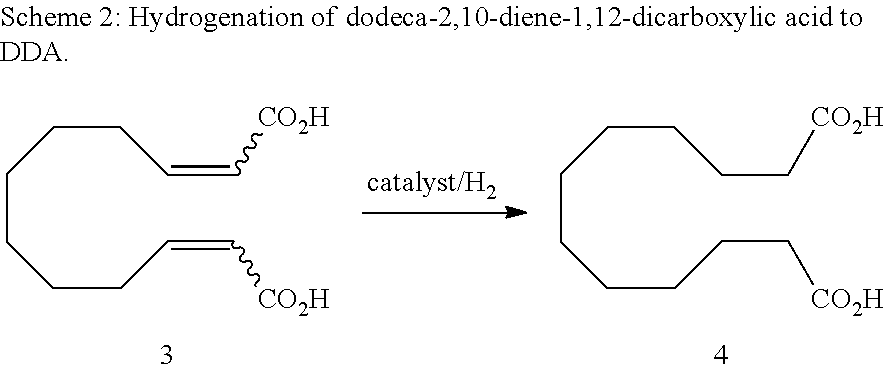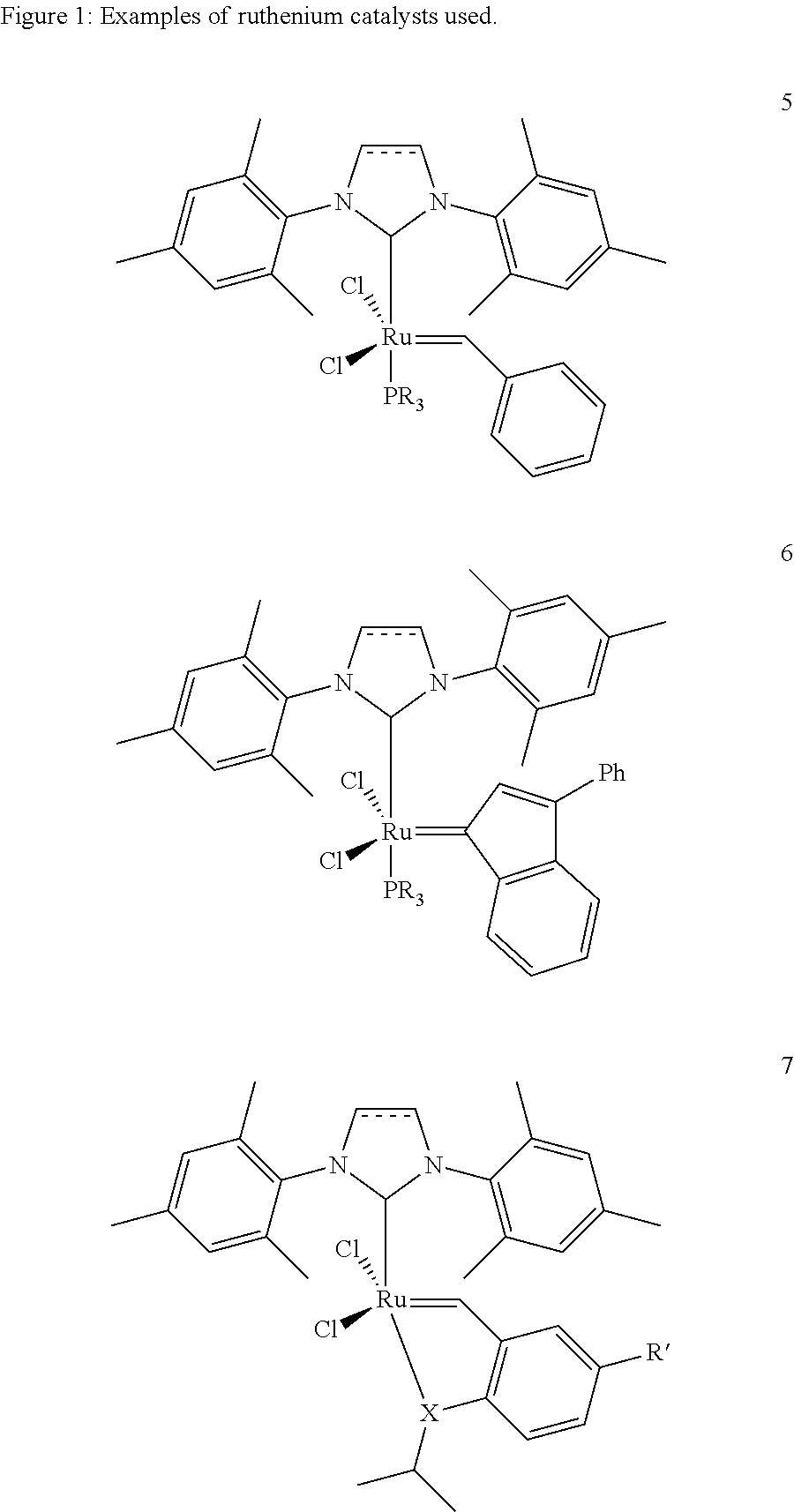Method for producing dodeca-2,10-diene-1,12-dicarboxylic acid or 1,12-dodecane-dicarboxylic acid by way of ring-opening cross metathesis (ROCM) of cyclooctene with acrylic acid
a technology of dodeca and dicarboxylic acid, which is applied in the preparation of carboxylic compounds, organic chemistry, chemistry apparatus and processes, etc., can solve the problems of uneconomical industrial implementation
- Summary
- Abstract
- Description
- Claims
- Application Information
AI Technical Summary
Problems solved by technology
Method used
Image
Examples
Embodiment Construction
[0021]1. 1,3-Bis(2,4,6-trimethylphenyl)-4,5-dihydroimidazol-2-ylidene[2-(i-propoxy)-5-(N,N-dimethylaminosulphonyl)phenyl]methyleneruthenium(II) dichloride (0.333 g, 0.45 mmol) is placed together with acrylic acid (13.09 g, 0.182 mol) under argon in a three-necked flask provided with reflux condenser and the mixture is heated to 60° C. Cyclooctene (10 g, 0.091 mol) is added dropwise over a period of 20 minutes. After 1.5 hours, the reaction mixture is allowed to cool to room temperature and is admixed with toluene (200 ml). It is briefly heated to boiling and subsequently cooled slowly while stirring. The solid which has precipitated is filtered off and washed with cold toluene (3×10 ml). After drying under reduced pressure, the product is obtained as a white solid (10.2 g, 50%). According to NMR analysis, the product has a purity of >99%.[0022]2. A mixture of cyclooctene (10 g, 0.091 mol) and acrylic acid (13.09 g, 0.182 mol) in toluene (20 ml) was heated to 60° C. 10 ml of a soluti...
PUM
| Property | Measurement | Unit |
|---|---|---|
| temperatures | aaaaa | aaaaa |
| temperatures | aaaaa | aaaaa |
| temperatures | aaaaa | aaaaa |
Abstract
Description
Claims
Application Information
 Login to View More
Login to View More - R&D
- Intellectual Property
- Life Sciences
- Materials
- Tech Scout
- Unparalleled Data Quality
- Higher Quality Content
- 60% Fewer Hallucinations
Browse by: Latest US Patents, China's latest patents, Technical Efficacy Thesaurus, Application Domain, Technology Topic, Popular Technical Reports.
© 2025 PatSnap. All rights reserved.Legal|Privacy policy|Modern Slavery Act Transparency Statement|Sitemap|About US| Contact US: help@patsnap.com



